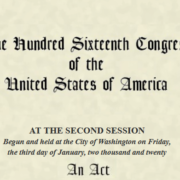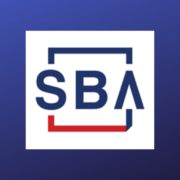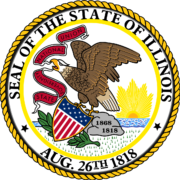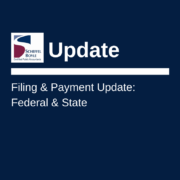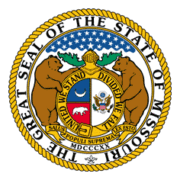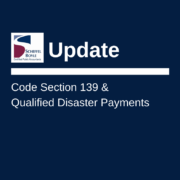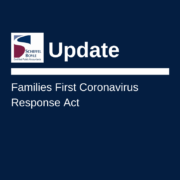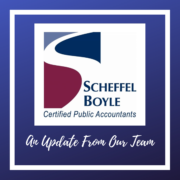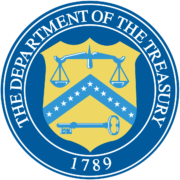President Trump Signs the CARES Act, Sending $2.2 Trillion for Coronavirus Relief
On March 27th, 2020, President Trump signed into law the Coronavirus Aid, Relief and Economic Security (CARES) Act, which provides relief to taxpayers affected by the coronavirus (COVID-19). The CARES Act is the third round of federal government aid related to COVID-19. We have summarized the top provisions in the new legislation below, with more detailed alerts on individual provisions to follow. Click here for a link to the full text of the bill.
Stimulus Refund Payments to Individual Taxpayers
One of the most talked-about portions of The CARES Act provides eligible individuals with a refund check. We’ve summarized the payout amounts and the criteria with each below. If you are unsure of your adjusted gross income (AGI) for the tax year this would be applicable to, it is listed on your 1040 federal tax return on Line 8b.
- Single Filers: if your AGI is less than $75,000, you will receive a refund of $1,200. The refund begins to phase out if the individual’s AGI exceeds $75,000, and is completely phased out for individuals with no qualifying children if their AGI exceeds $99,000.
- Joint Filers (Married Filing Joint): if your combined AGI is less than $150,000, you will receive a refund of $2,400. The refund begins to phase out if the filers’ AGI exceeds $150,000, and is completely phased out for joint filers with no qualifying children if their AGI exceeds $198,000.
- Head of Household (HOH) Filers: if your AGI is less than $112,500, you will receive a refund of $1,200. The refund begins to phase out if the filer’s AGI exceeds $112,500, and is completely phased out for HOH with no qualifying children if their AGI exceeds $136,500.
- Qualifying Children: in addition to the refunds listed above, taxpayers will receive $500 per qualifying child. Criteria for this is listed below.
A qualifying child is…
- a child, stepchild, eligible foster child, brother, sister, stepbrother, or stepsister, or a descendent of any of them,
- 16 years of age or younger,
- who has not provided more than half of their own support,
- who has lived with the taxpayer for more than half of the year, and
- who has not filed a joint return (other than only for a claim for refund) with the individual’s spouse for the taxable year beginning in the calendar year in which the taxable year of the taxpayer begins.
Eligible individuals do not include nonresident aliens, individuals who may be claimed as a dependent on another person’s return, estates, or trusts. Eligible individuals and qualifying children must all have a valid social security number. For married taxpayers who filed jointly with their most recent tax filings (2018 or 2019) but will file separately in 2020, each spouse will be deemed to have received one half of the credit.
The refund is determined based on the taxpayer’s 2020 income tax return but is advanced to taxpayers based on their 2018 or 2019 tax return, as appropriate. If an eligible individual’s 2020 income is higher than the 2018 or 2019 income used to determine the rebate payment, the eligible individual will not be required to pay back any excess rebate. However, if the eligible individual’s 2020 income is lower than the 2018 or 2019 income used to determine the rebate payment such that the individual should have received a larger rebate, the eligible individual will be able to claim an additional credit generally equal to the difference of what was refunded and any additional eligible amount when they file their 2020 income tax return.
Individuals who have not filed a tax return in 2018 or 2019 may still receive an automatic advance based on their social security benefit statements (Form SSA-1099) or social security equivalent benefit statement (Form RRB-1099). Other individuals may be required to file a return to receive any benefits.
So what about college students?
Yes, college students are eligible for the stimulus as long as they are not claimed as a dependent on their parent or guardian’s return.
Sidenote: federal student loan payments have been deferred, waiving penalties, for two months due to the Coronavirus pandemic. Furthermore, federal student loans have also waived interest for six months.
What do I need to do to receive my payment and where will it go?
If you are current with your 2018 or 2019 tax filings, you do not need to apply or take any extra steps to receive your payment.
The payment will be given to you in the format you requested on your most recent tax filing (2018 or 2019). If you had your refund mailed to you, it will be mailed. If you had your refund direct deposited, it will be deposited in the same bank account which your refund was deposited.
Retired, Veteran, Disabled, on Social Security, or Eligible Unemployed?
All will still receive a payment in accordance with the guidelines listed above.
When can I expect to get my stimulus payment?
Lots of information has been circulating on the timeframe for distribution of these payments. However, Treasury Secretary Mnuchin recently said he expects most taxpayers to receive their payments within three weeks.
The Act also outlined a safeguard to those unsure where their payment would end up or if they would receive one. All recipients of the stimulus will receive a paper notice via USPS within a few weeks after your payment was disbursed. The notice will outline when the payment was released and to where (direct deposit account or mailed to a physical address). If you still cannot locate your payment after receiving that letter, we would urge you to contact the IRS with that information.
Charitable Contributions
Above-the-line deductions. Under the CARES Act, an eligible individual may take a qualified charitable contribution deduction of up to $300 against their AGI in 2020. An eligible individual is any individual taxpayer who does not elect to itemize his or her deductions. A qualified charitable contribution is a charitable contribution:
- made in cash,
- for which a charitable contribution deduction is otherwise allowed, and
- that is made to certain publicly supported charities.
This above-the-line charitable deduction may not be used to make contributions to a non-operating private foundation or to a donor advised fund.
Modification of limitations on cash contributions. Currently, individuals who make cash contributions to publicly supported charities are permitted a charitable contribution deduction of up to 60% of their AGI. Any such contributions in excess of the 60% AGI limitation may be carried forward as a charitable contribution in each of the five succeeding years.
The CARES Act temporarily suspends the AGI limitation for qualifying cash contributions, instead permitting individual taxpayers to take a charitable contribution deduction for qualifying cash contributions made in 2020. However, such contributions must not exceed the excess of the individual’s contribution base over the amount of all other charitable contributions allowed as a deduction for the contribution year. Any excess is carried forward as a charitable contribution in each of the succeeding five years. Taxpayers wishing to take advantage of this provision must make an affirmative election on their 2020 income tax return.
This provision is useful to taxpayers who elect to itemize their deductions in 2020 and make cash contributions to certain public charities. As with the aforementioned above-the-line deduction, contributions to non-operating private foundations or donor advised funds are not eligible.
For corporations, the CARES Act temporarily increases the limitation on the deductibility of cash charitable contributions during 2020 from 10% to 25% of the taxpayer’s taxable income. The CARES Act also increases the limitation on deductions for contributions of food inventory from 15% to 25%.
Technical Correction to Qualified Improvement Property
The CARES Act contains a technical correction to a drafting error in the Tax Cuts and Jobs Act that required qualified improvement property (QIP) to be depreciated over 39 years, rendering such property ineligible for bonus depreciation. With the technical correction applying retroactively to 2018, QIP is now 15-year property and eligible for 100% bonus depreciation. This will provide immediate current cash flow benefits and relief to taxpayers, especially those in the retail, restaurant, and hospitality industries.
Taxpayers that placed QIP into service in 2019 can claim 100% bonus depreciation prospectively on their 2019 return and should consider whether they can file Form 4464 to quickly recover overpayments of 2019 estimated taxes. Taxpayers that placed QIP in service in 2018 and that filed their 2018 federal income tax return treating the assets as bonus-ineligible 39-year property should consider amending that return to treat such assets as bonus-eligible. For C corporations, in particular, claiming the bonus depreciation on an amended return can potentially generate NOLs that can be carried back five years under the new NOL provisions of the CARES Act to taxable years before 2018 when the tax rates were 35%, even though the carryback losses were generated in years when the tax rate was 21%. With the taxable income limit under Section 172(a) being removed, an NOL can fully offset income to generate the maximum cash refund for taxpayers that need immediate cash. Alternatively, in lieu of amending the 2018 return, taxpayers may file an automatic Form 3115, Application for Change in Accounting Method, with the 2019 return to take advantage of the new favorable treatment and claim the missed depreciation as a favorable Section 481(a) adjustment.
Compensation, Benefits, and Payroll Relief
Unemployment Benefits. The CARES Act temporarily increases the amount of and expands eligibility for unemployment benefits, and provides relief for workers who are self-employed. The law allows for individuals are not currently eligible for federal and state unemployment benefits, but are now unable to work due to the COVID-19 pandemic, a fixed amount of unemployment compensation. Furthermore, individuals who resign from their position surrounding a coronavirus-related incident or effect would be eligible for benefits as well.
For those who were already receiving unemployment benefits, the law enhanced their current benefit with an additional $600 per week in compensation. They will also be granted an additional 13 weeks in benefits.
Eligible individuals include those who are fully or partially unemployed or unable to work because…
- They had to quit their job as a direct result of COVID-19
- They have contracted COVID-19 and have been diagnosed by a medical professional, or are experiencing symptoms and are seeking an official diagnosis
- Someone in their household has been diagnosed by a medical professional
- They must provide full-time care for a dependent, a family member, or someone in their household who has contracted the virus
- If they depend on a school or facility for care of a child or someone in their household in order to work, and that school or facility is closed as a direct result of the pandemic
- If their current employment closed as a result of the quarantine put in place due to the pandemic, or they were scheduled to begin a position and that employer and/or position has ceased as a result of the Coronavirus
- If the head of household dies in direct result of the Coronavirus, and the applicant is now the breadwinner of the home
Payroll Relief. Several provisions assist certain employers who keep employees on payroll even though the employees are not able or needed to work. The cornerstone of the payroll protection aid is a streamlined application process for SBA loans that can be forgiven if an eligible employer maintains its workforce at certain levels. Additionally, certain employers affected by the pandemic who retain their employees will receive a credit against payroll taxes for 50% of eligible employee wages paid or incurred from March 13 to December 31, 2020. This employee retention credit would be provided for as much as $10,000 of qualifying wages, including health benefits.
In addition, eligible employers may defer remitting employer payroll tax payments that remain due for 2020 (after the credits are deducted), with half being due by December 31, 2021, and the balance due by December 31, 2022. Employers with fewer than 500 employees are also allowed to give terminated employees access to the mandated paid federal sick and child care leave benefits for which the employer is 100% reimbursed by the government through payroll tax credits if the employer rehires the qualifying employees.
Any benefit that is driven off the definition of “employee” raises the issue of partner versus employee. The profits interest member that is receiving a W-2 may not be eligible for inclusion in the various benefit computations.
Retirement Accounts. Eligible individuals can withdraw vested amounts up to $100,000 during 2020 without a 10% early distribution penalty, and income inclusion can be spread over three years. Repayment of distributions during the next three years will be treated as tax-free rollovers of the distribution. The bill also makes it easier to borrow money from 401(k) accounts, raising the limit to $100,000 from $50,000 for the first 180 days after enactment, and the payment dates for any loans due the rest of 2020 would be extended for a year.
Individuals do not have to take their 2020 required minimum distributions from their retirement funds. This avoids lost earnings power on the taxes due on distributions and maximizes the potential gain as the market recovers.
Added Benefit. Two long-awaited provisions allow employers to assist employees with college loan debt through tax free payments up to $5,250 and restores over-the-counter medical supplies as permissible expenses that can be reimbursed through health care flexible spending accounts and health care savings accounts.
Deferral of Net Business Losses for Three Years
Section 461(l) limits non-corporate taxpayers in their use of net business losses to offset other sources of income. As enacted in 2017, this limitation was effective for taxable years beginning after 2017 and before 2026, and applied after the basis, at-risk, and passive activity loss limitations. The amount of deductible net business losses is limited to $500,000 for married taxpayers filing a joint return and $250,000 for all other taxpayers. These amounts are indexed for inflation after 2018 (to $518,000 and $259,000, respectively, in 2020). Excess business losses are carried forward to the next succeeding taxable year and treated as a net operating loss in that year.
The CARES Act defers the effective date of Section 461(l) for three years, but also makes important technical corrections that will become effective when the limitation on excess business losses once again becomes applicable. Accordingly, net business losses from 2018, 2019, or 2020 may offset other sources of income, provided they are not otherwise limited by other provisions that remain in the Code. Beginning in 2021, the application of this limitation is clarified with respect to the treatment of wages and related deductions from employment, coordination with deductions under Section 172 (for net operating losses) or Section 199A (relating to qualified business income), and the treatment of business capital gains and losses.
Net Operating Losses Carryback Allowed for Taxable Years Beginning in 2018 and Before 2021
The Act provides for an elective five-year carryback of net operating losses (NOLs) generated in taxable years beginning after December 31, 2017, and before January 1, 2021. Taxpayers may elect to relinquish the entire five-year carryback period with respect to a particular year’s NOL, with the election being irrevocable once made. In addition, the 80% limitation on NOL deductions arising in taxable years beginning after December 31, 2017, has temporarily been pushed to taxable years beginning after December 31, 2020. Several ambiguities in the application of Section 172 arising as a result of drafting errors in the Tax Cuts and Jobs Act have also been corrected.
As certain benefits (i.e., charitable contributions, Section 250 “GILTI” deductions, etc.) may be impacted by an adjustment to taxable income, and therefore reduce the effective value of any NOL deduction, taxpayers will have to determine whether to elect to forego the carryback. Moreover, the bill provides for two special rules for NOL carrybacks to years in which the taxpayer included income from its foreign subsidiaries under Section 965. Please consider the impact of this interaction with your international tax advisors. However, given the potential offset to income taxed under a 35% federal rate, and the uncertainty regarding the long-term impact of the COVID-19 crisis on future earnings, it seems likely that most companies will take advantage of the revisions.
Alternative Minimum Tax Credit Refunds
The CARES Act allows the refundable alternative minimum tax credit to be completely refunded for taxable years beginning after December 31, 2018, or by election, taxable years beginning after December 31, 2017. Under the Tax Cuts and Jobs Act, the credit was refundable over a series of years with the remainder recoverable in 2021.
Effects of the CARES Act at the State and Local Levels
As with the Tax Cuts and Jobs Act, the tax implications of the CARES Act at the state level first depends on whether a state is a “rolling” Internal Revenue Code (IRC) conformity state or follows “fixed-date” conformity. For example, with respect to the modifications to Section 163(j), rolling states will automatically conform, unless they specifically decouple (but separate state ATI calculations will still be necessary). However, fixed-date conformity states will have to update their conformity dates to conform to the Section 163(j) modifications. A number of states have already updated during their current legislative sessions (e.g., Idaho, Indiana, Maine, Virginia, and West Virginia). Nonetheless, even if a state has updated, the effective date of the update may not apply to changes to the IRC enacted after January 1, 2020 (e.g., Arizona).
A number of other states have either expressly decoupled from Section 163(j) or conform to an earlier version and will not follow the CARES Act changes (e.g., California, Connecticut, Georgia, Missouri, South Carolina, Tennessee (starting in 2020), Wisconsin). Similar considerations will apply to the NOL modifications for states that adopted the 80% limitation, and most states do not allow carrybacks. Likewise, in fixed-dated conformity states that do not update, the Section 461(l) limitation will still apply resulting in a separate state NOL for those states. These conformity questions add another layer of complexity to applying the tax provisions of the CARES Act at the state level. Further, once the COVID-19 crisis is past, rolling IRC conformity states must be monitored, as these states could decouple from these CARES Act provisions for purposes of state revenue.
How We Can Help
We are always here. Our team is closely monitoring new regulations as they roll out and doing all we can to disseminate that information to our clients and friends. If you have a specific question on your situation, please contact your trusted Scheffel Boyle team member. We remain dedicated to helping our clients navigate these uncertain times and will use every resource available to us to best serve you.

